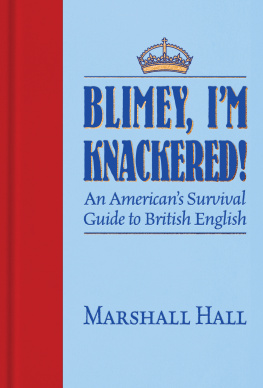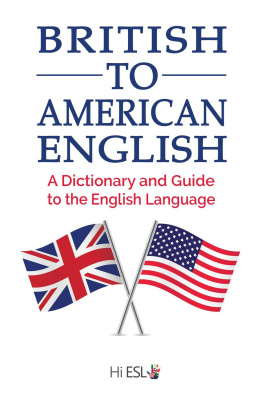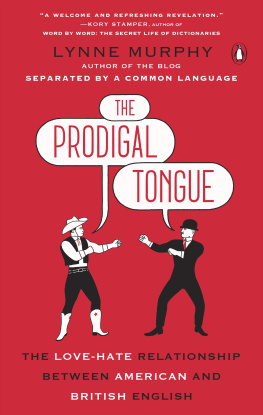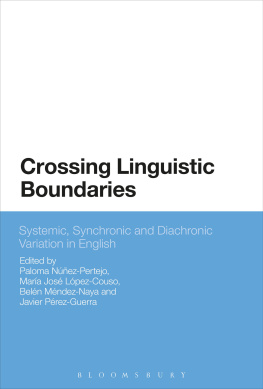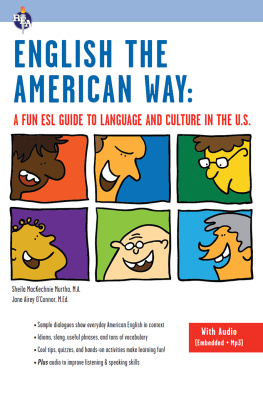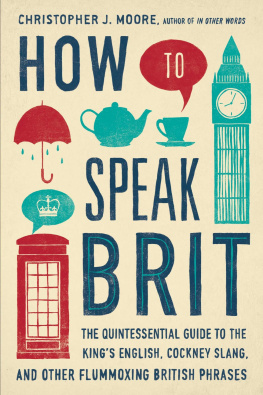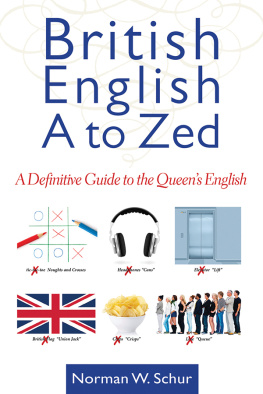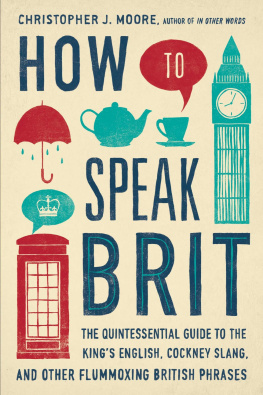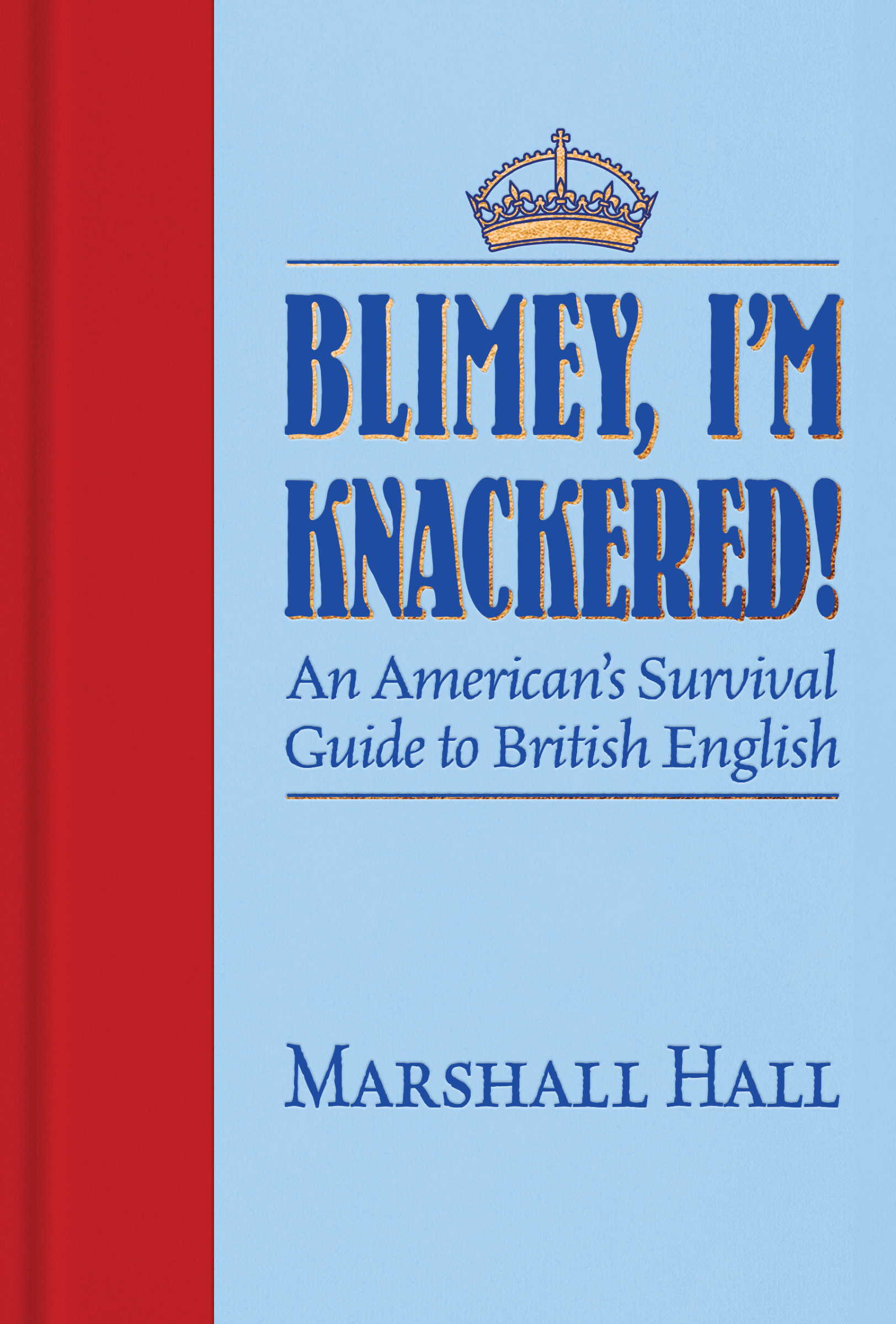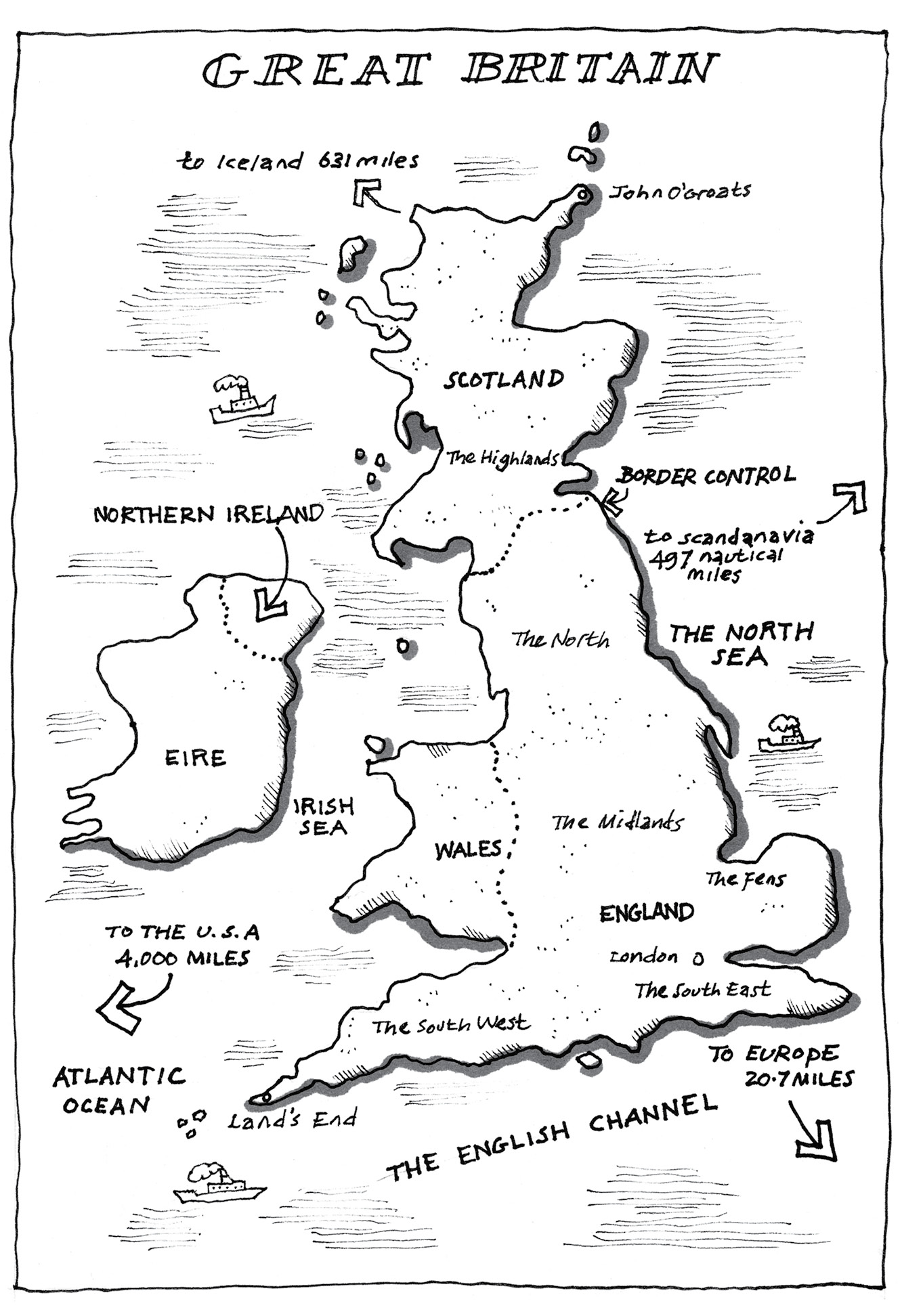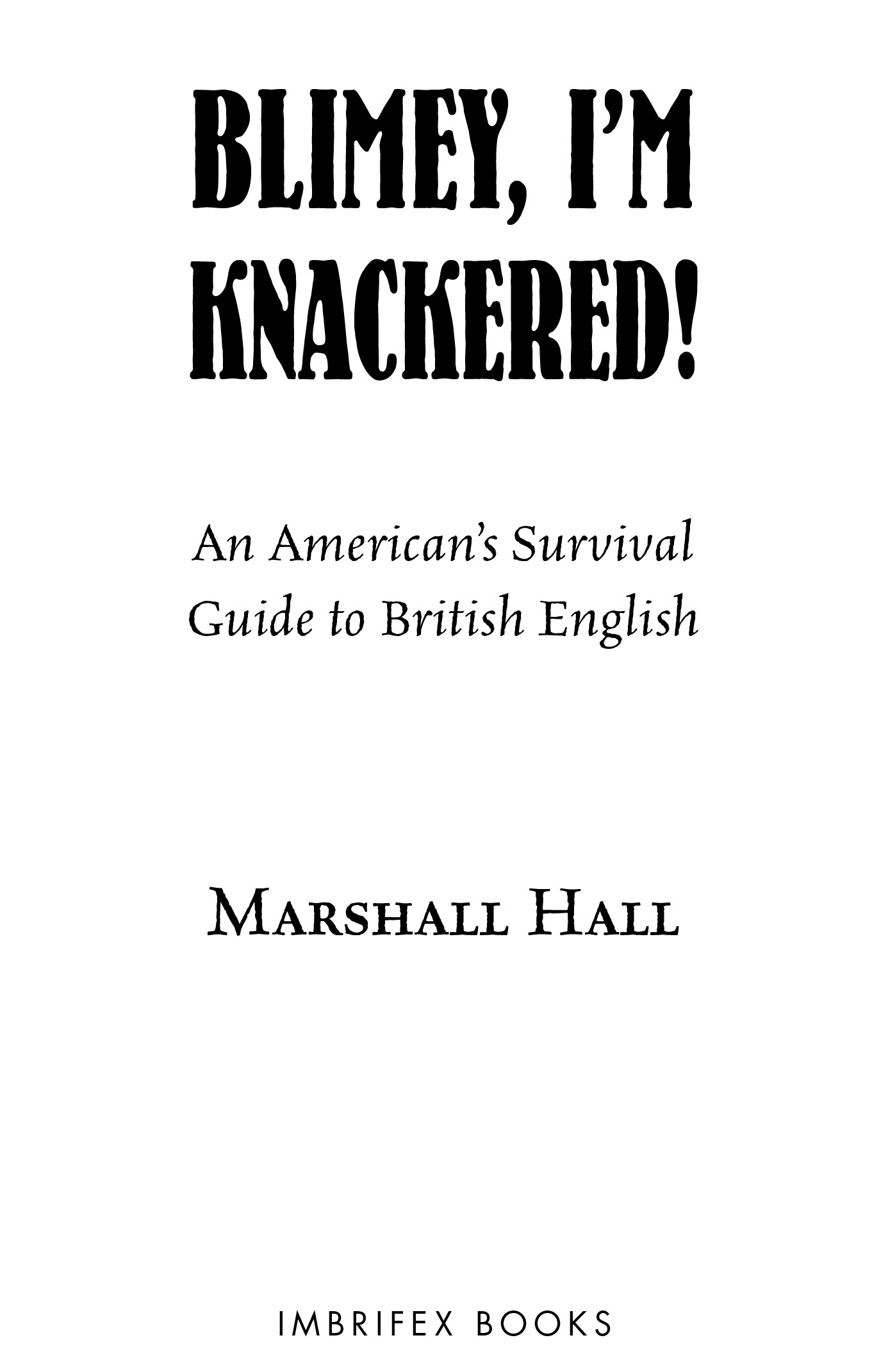IMBRIFEX BOOKS 8275 S. Eastern Avenue, Suite 200 Las Vegas, NV 89123 Imbrifex.com
Text 2021 by Marshall Hall. All rights reserved under International and Pan-American Copyright Conventions. No part of this book may be used or reproduced in any manner whatsoever without written permission from the publisher, except in the case of brief quotations used in critical articles and reviews. This publication is provided for informational, educational, and entertainment purposes. The information contained in this publication is true to the best of our knowledge.
Corrections, updated and suggestions may be sent to the author at: books@ imbrifex.com . Editors: Peter Thody, David Johnstone, Tom Herbertson Illustrator: Mark Cowie Cover and Book Designer: Sue Campbell Book Design Author Photo: Peter Thody Library of Congress Cataloging-in-Publication Data Names: Hall, Marshall, 1951- author. Title: Blimey, Im knackered! : an Americans survival guide to British English / Marshall Hall. Description: First edition. | Las Vegas : Imbrifex Books, 2021. | Summary: Blimey, Im Knackered is the perfect companion for anyone desiring to bridge the gap between US and UK English or who simply enjoys the evolution of language and culture. | Summary: Blimey, Im Knackered is the perfect companion for anyone desiring to bridge the gap between US and UK English or who simply enjoys the evolution of language and culture.
American scholar and longtime UK resident Marshall Hall has organized his insightful definitions and explanations of British idioms, colloquialisms, abbreviations, acronyms, and slang into nineteen entertaining and revealing chapters covering everything from transportation and food to politics, education, and wardrobe-- Provided by publisher. Identifiers: LCCN 2020054254 (print) | LCCN 2020054255 (ebook) | ISBN 9781945501494 (hardcover) | ISBN 9781945501500 (epub) Subjects: LCSH: English language--Great Britain--Glossaries, vocabularies, etc. | English language--Great Britain--Terms and phrases. Classification: LCC PE1704 .H35 2021 (print) | LCC PE1704 (ebook) | DDC 427/.941--dc23 LC record available at https://lccn.loc.gov/2020054254 LC ebook record available at https://lccn.loc.gov/2020054255 First Edition: August 2021 Printed in the United States of America IMBRIFEX is registered trademark of Flattop Productions, Inc. Dedicated to my daughters
Anne, Katie, and Sarah England and America are two countries
separated by a common language. George Bernard Shaw Introduction T he English language is a malleable and yet tenacious thing.
It has an amazing number of manifestations in every continent on the globe. It allows for adaptations, additions, omissions, and local variations, and still, or perhaps because of it, offers one of the greatest media for personal expression in human history. British English and American English are no exceptions to this generic and individual growth phenomenon, and each has evolved along separate lines of influence for well over three hundred years. The resulting differences mean that travelers arriving in the UK for the first time are confronted by a bewildering collection of words, spellings, colloquialisms, and pronunciations, all wonderful parts of what they had previously thought was the same language. Even with increasing world travel and corporate globalization, regional English pride and stubbornness ensure that British English remains particularly rich with local expressions and pronunciations. These continue to be some of the primary fascinations Americans have with England and the rest of the United Kingdom.
This book was written by an American living in Britain for the assistance of fellow Americans planning to visit this great country and for the amusement of our British friends. It started at a party one evening as a humorous list of the idiosyncrasies of British English compared to American English. Every American expat has accumulated stories of how they or a friend have been embarrassed by some naive misuse of British English. Many of those stories are included here. We started to list the differences, and in a matter of minutes had more than a hundred. Over the ensuing weeks as friends, family, and colleagues heard of the list, e-mails started to arrive with contributions and tales.
Every evening out, every dinner conversation, and every casual greeting at the university generated an additional few entries. The fun list soon turned into a group project with nearly seven hundred identified differences. Once the list had been compiled, the challenge became one of definition. We soon discovered that there are no written, institutionalized, or even commonly accepted definitions for most of the entries. Meanings in one part of Britain had evolved to become something different in another part, and many wine-soaked discussions erupted over what certain things meant locally. The task was eventually organized into nineteen categories, as reflected in the table of contents.
Many entries fell into several sections, and decisions had to be made as to where they fit the best. The colloquialisms were undoubtedly the sources of the most humor and discussion. Over the subsequent months, the definitionsand sometimes pronunciationswere written, researched, debated, and rewritten. As new entries arrived, everyone involved in the project began to realize that our list was not definitive. There are unquestionably hundreds of variations and new words that have been overlooked or we have yet to hear. 1.
Buildings and Structures T he architecture of the UK is the result of a multitude of influences, including cultural values, expediency, local building materials, urban density, and available expertise. 1.
Buildings and Structures T he architecture of the UK is the result of a multitude of influences, including cultural values, expediency, local building materials, urban density, and available expertise.
Visitors to Edinburgh, as an example, will no doubt notice architectural styles, building materials, and urban layouts that are distinctly different from the red brick and Portland stone of London. The countryside has its own historic and often very practical styles that include thatched roofs that are newly installed and maintained even today. The population booms of the Victorian and post-World War II eras called for new ways of thinking about and constructing housing for the masses. In the late nineteenth century, this resulted in excessively long terraces of houses sharing common dividing walls with two up-two down room layouts and an outdoor toilet. From the 1950s to the 1970s, the Victorian terraced houses were seen as slums, and many were cleared away to make room for the new and modern high-rise tower blocks, which have themselves started to be cleared away for the next wave of high-density housing. Both have enjoyed a regeneration in recent decades as demonstrated by the protective historical listing given to several of the high-rise tower blocks and seen in the gentrification of the London Docklands and other London, Manchester, Glasgow, and many other city neighborhoods.

